Discover 11 hidden attractions, cool sights, and unusual things to do in Waynesboro (United States). Don't miss out on these must-see attractions: Wayne Theatre, Plumb House, and Ridgeview Park & War Memorial Pool. Also, be sure to include Fairfax Hall in your itinerary.
Below, you can find the list of the most amazing places you should visit in Waynesboro (Virginia).
Table of Contents
Wayne Theatre
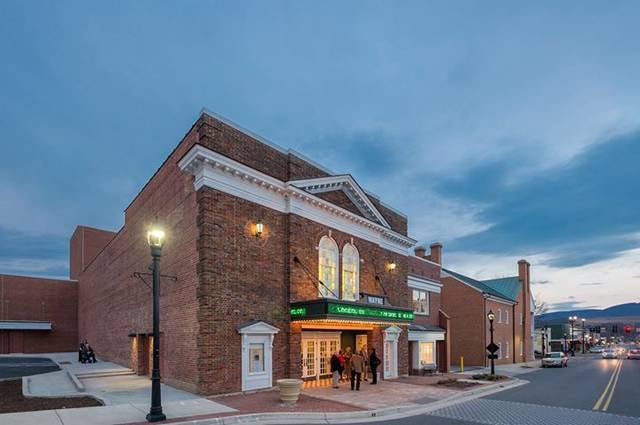
Top attraction, Concerts and shows, Theater
Address: 329 W Main St, 22980-4508 Waynesboro
Plumb House

Home in Waynesboro, Virginia. The Plumb House is a historic U.S. home located at 1012 West Main Street, Waynesboro, Virginia. The house currently serves as the Plumb House Museum and is operated by the Waynesboro Heritage Foundation.[1]
Ridgeview Park & War Memorial Pool
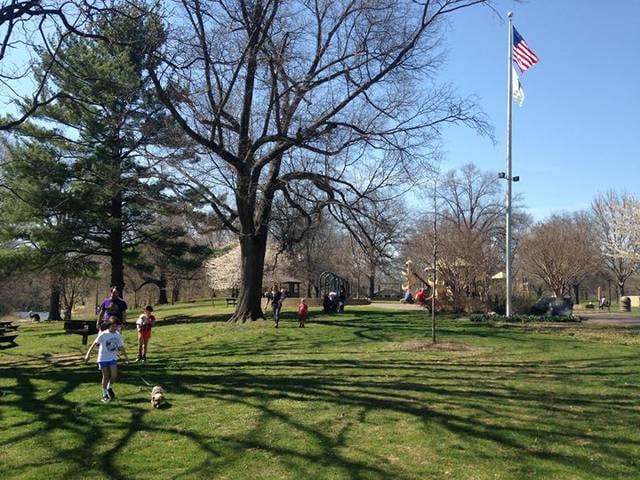
Park, Relax in park
Address: 850 S Magnolia Ave, 22980 Waynesboro
Fairfax Hall
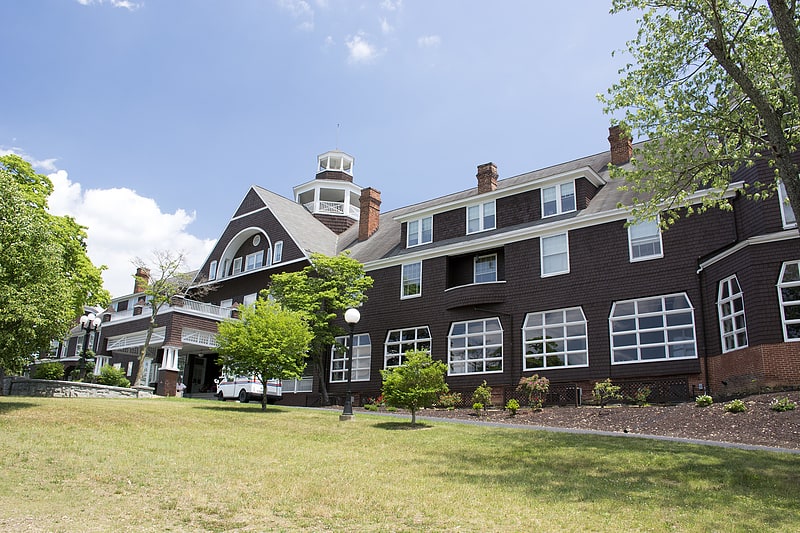
Building in Waynesboro, Virginia. Fairfax Hall, also known as Hotel Brunswick, Brandon Hotel, or Fairfax Hall School, is a historic building located at Waynesboro, Virginia. It was built in 1890, and is a 2+1⁄2-story, very long and rambling resort hotel building in the shingled mode of the Queen Anne style. It has an irregular symmetry with towers at either end of the facade, a one-story porte cochere, a distinctive octagonal belvedere and cupola, and glassed in first story porches. Also on the property is a contributing gymnasium, built in 1926 in the European Renaissance style. It was originally occupied by the Brandon Hotel resort. The Brandon closed in 1913 but the building reopened as a school. In 1920 the school became Fairfax Hall, a junior college and preparatory school for girls. After the school closed in 1975, it was leased by the Virginia Department of Corrections as a training academy but then purchased and reopened as a retirement home.
It was listed on the National Register of Historic Places in 1982.
Former students of the college and preparatory school for girls include film star Martha Hyer, musician Nikki Hornsby and politician Julia Brownley.[2]
Tree Streets Historic District
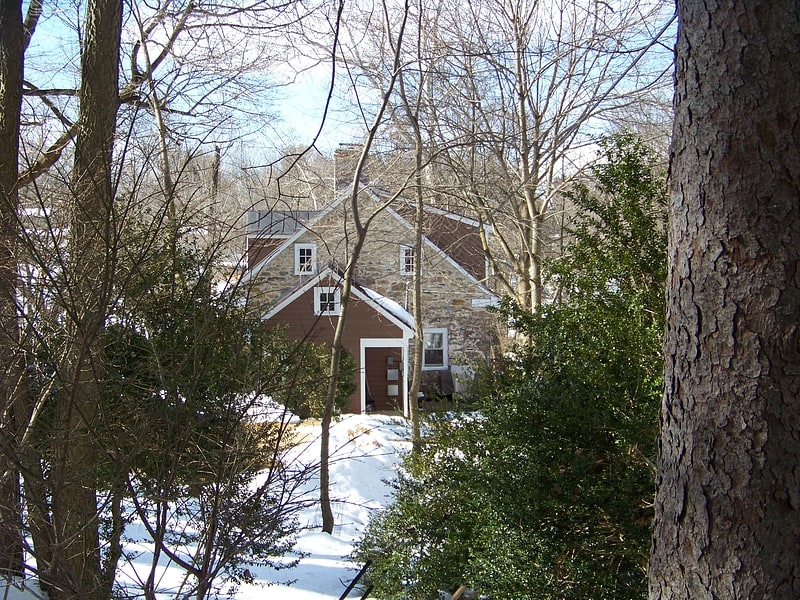
The Tree Streets Historic District is a 120-acre historic district in Waynesboro, Virginia. The aptly named district contains portions of Cherry, Chestnut, Locust, Maple, Oak, Pine and Walnut Avenues as well as portions of Eleventh through Sixteenth Streets and part of South Wayne Avenue. It covers the oldest residential neighborhood in Waynesboro, and reflects the various stages of development of the city from the 19th century through 1951. It was listed on the National Register of Historic Places in 2002. In 2002, it included 445 buildings deemed to contribute to the historic character of the area, two contributing sites, and seven other contributing structures.
The oldest structure in the district is the Old Stone House, on Oak Avenue overlooking the South River. The age of the house is uncertain, with estimates ranging from the mid-18th century through the early 19th century. Though it has been extensively renovated at least twice, it retains the original 18-inch-thick (460 mm) fieldstone walls, chimneys at each end and some examples of original woodwork within. On the same property sometime before 1866, the neighboring Rose Cliff was erected. The two-story brick Rose Cliff was the plantation house for a large farm and orchard. In 2006, it was listed separately in the National Register of Historic Places for its architectural significance.
About 1890, development was begun in earnest by the successful Waynesboro Company. Early development of this era included Queen Anne style residences like the W.J. Whitaker House at 517 Walnut Avenue and the Fry House at 428 Maple Avenue. The Fry House was designed by architect Carrington Hubbard, and the Whitaker House seems to be a variation of his design. Similarities between the two houses are many, including bay windows, balconies, patterned spandrels and reeded window surrounds while differences include the Fry House's octagonal turret and the Whitaker House's front door transom window. Related groupings of houses such as these were common during this period of development. Another feature indicative of development at this time is "a circular gable vent with a chrysanthemum-like piercing pattern", like the one at 353-357 Chestnut Avenue.[3]
General Electric Specialty Control Plant

General Electric Specialty Control Plant is a 115 acres historic factory complex located at Waynesboro, Virginia. The complex includes three contributing buildings, one contributing site, and two contributing structures. The historic buildings and structures are a 340,000-square-foot main plant building, the original water tower, water tank, a group of evolved and interconnected construction sheds built from 1953 to the present, and an airplane hangar. The property, a former airport, was acquired by General Electric in 1953. The Waynesboro plant was one of some 120 individual operating departments created as part of a decentralization effort by the General Electric Corporation. The Specialty Control Plant was responsible for the development of breakthrough technologies in areas ranging from America's military efforts to space travel to computer technology. The facility was sold to GENICOM on October 21, 1983.
The property was originally on General Electric Drive. After the GENICOM sale, it was renamed GENICOM Drive. In 1994, GENICOM internally reorganized into two separate companies: Enterprising Solutions Services Company (ESSC) and Document Solutions Company (GENICOM). The road north of Hopeman Parkway was renamed Solutions Way while the southern part remained GENICOM Drive at the request of property owners in that area.
In 2000, GENICOM entered bankruptcy and the building was sold to the newly formed Solutions Way Management. The substantially downsized GENICOM operated as a tenant through its 2003 merger that formed TallyGenicom until a further bankruptcy and dissolution in 2009.
The building was added to the National Register of Historic Places in 2012.
Solutions Way Management rents much of the facility to companies for light manufacturing, warehousing and distribution.[4]
Crompton-Shenandoah Plant
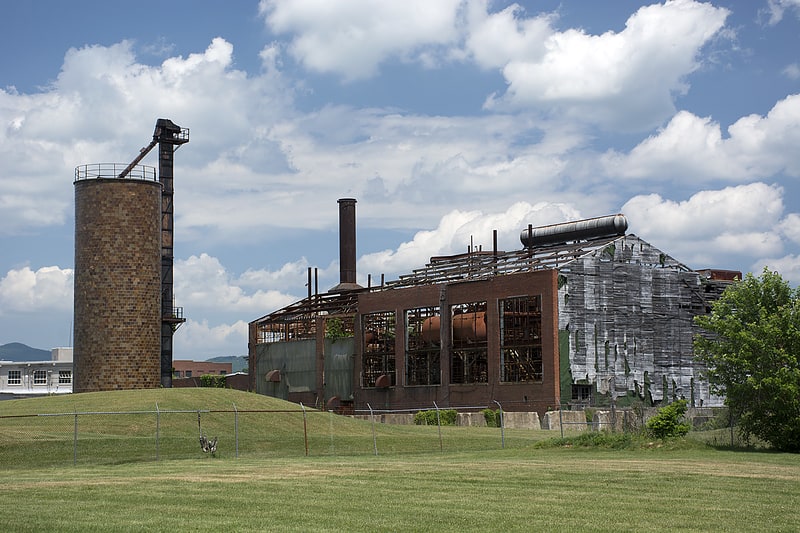
Historical landmark in Waynesboro, Virginia. Crompton-Shenandoah Plant, also known as The Mill at South River, is a historic textile factory complex located at Waynesboro, Virginia. The complex includes 11 contributing buildings and 8 contributing structures involved in the dyeing and finishing of the gray corduroy and velveteen goods. The historic buildings and structures were built beginning in 1926 through 1948. The complex includes two plant buildings, a machine shop/supply storage building, a former enameling plant, a boiler house, a water softener building, a chemical storage building, a lab, a gate house/personnel office, an office building and a retail store. The factory closed in the 1980s along with most Crompton Corporation plants.
It was added to the National Register of Historic Places in 2011.[5]
Waynesboro Downtown Historic District

The Waynesboro Downtown Historic District is a national historic district in Waynesboro, Virginia. In 2002, it included 43 contributing buildings in the compact central business district of Waynesboro. The district includes churches, houses, mixed-use commercial buildings, banks, specialty stores, offices, a hotel, restaurants, and parking lots. Notable buildings include the First National Bank, the LB&B Building, and the General Wayne Hotel.
It was listed on the National Register of Historic Places in 2002.[6]
Virginia Metalcrafters Historic District
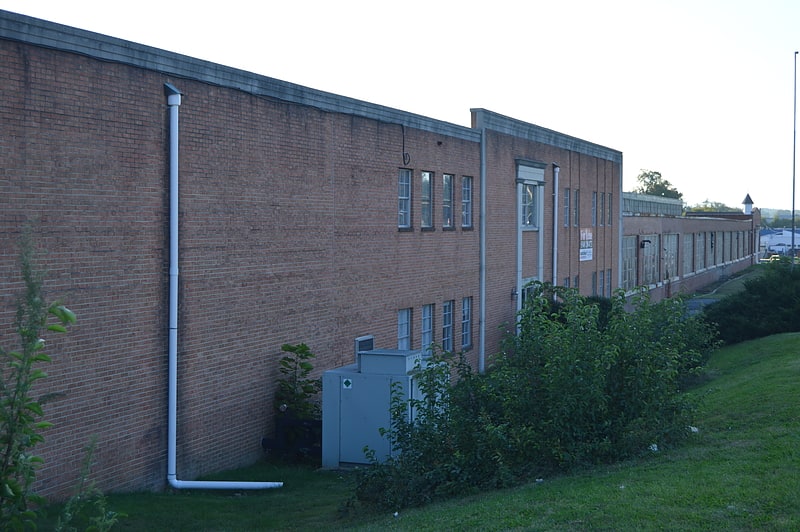
Historical place in Waynesboro, Virginia. The Virginia Metalcrafters Historic District encompasses a historic industrial complex at 1010 East Main Street in Waynesboro, Virginia. The complex includes one large multi-section brick factory, a number of small outbuildings, and the ruins of at least one collapsed building. The complex was from 1925 until the company's 2006 demise home to the Virginia Metalcrafters Company, a business founded in 1890, which created reproduction hardware for historic sites including Colonial Williamsburg, Mystic Seaport, and Old Salem.
The building was added to the National Register of Historic Places in 2015.[7]
Port Republic Road Historic District
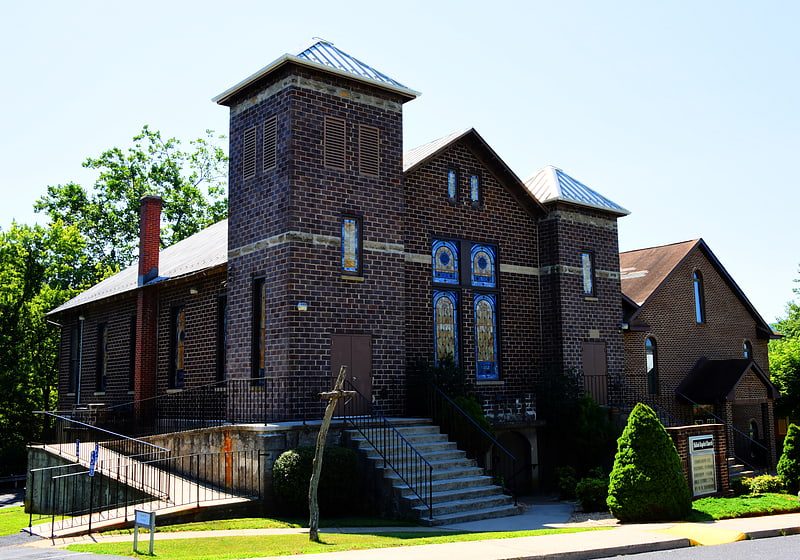
Historical place in Waynesboro, Virginia. The Port Republic Road Historic District is a national historic district in Waynesboro, Virginia. In 2002, it included 83 buildings deemed to contribute to the historic character of the area, plus one other contributing structure and one contributing site, a foundation. They include buildings such as houses, garages, sheds, commercial buildings, churches, and meeting halls, and structures such as carports and animal sheds. The historically African-American neighborhood developed after the American Civil War. Notable buildings include the Shiloh Baptist Church, the early-20th century Elks and Abraham lodges, the Rosenwald School, which incorporates a 1938-39 auditorium/gymnasium, and Tarry's Hotel.
It was listed on the National Register of Historic Places in 2002.[8]
Fishburne Military School

Private school in Waynesboro, Virginia. Fishburne Military School is a private, military boarding school for boys in Waynesboro, Virginia, United States. It was founded by James A. Fishburne in 1879 and is one of the oldest military schools in the country.[9]